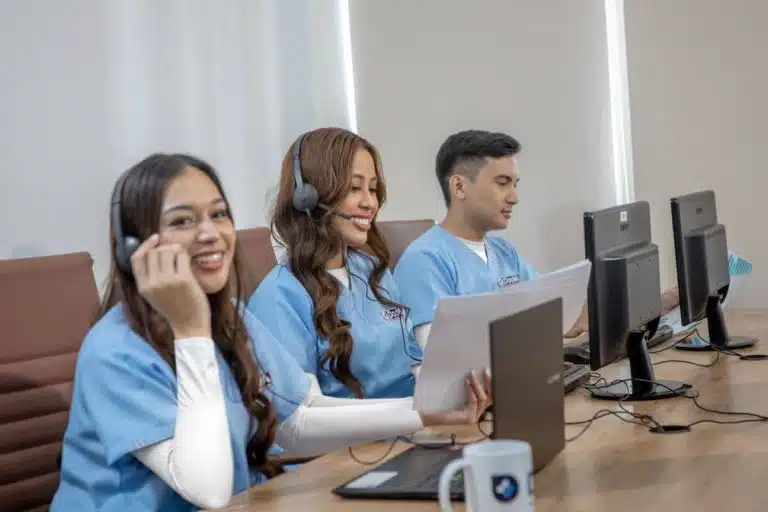In recent years, the healthcare industry has seen a remarkable shift toward technological integration to enhance patient care and streamline operations. Among these advancements, remote patient monitoring virtual assistants has emerged as a pivotal component in transforming the patient experience. With the advent of Virtual Assistants (VAs) dedicated to RPM, healthcare providers now have powerful tools at their disposal to ensure patients receive timely, personalized, and proactive care from the comfort of their homes. This article explores how RPM VAs optimize patient experience by improving access to care, enhancing communication, and promoting patient engagement.
Improved Access to Care
One of the most significant benefits of RPM VAs is the enhanced access to healthcare services they provide. Traditional healthcare often requires patients to travel for in-person appointments, which can be challenging and time-consuming. With RPM VAs, patients can receive ongoing monitoring and support from their homes, alleviating the need for frequent physical visits. This method is particularly advantageous for those living in rural areas or with mobility challenges, ensuring they receive consistent and accessible care. RPM VAs offer round-the-clock monitoring, enabling providers to track vital signs, medication adherence, and more, leading to early detection of potential health issues.
Enhanced Communication
Effective communication between patients and healthcare providers is crucial for successful outcomes. RPM VAs are a bridge, facilitating seamless communication through various digital platforms. Patients can easily contact their healthcare providers with questions or concerns, while providers can promptly share important health-related updates and recommendations. These virtual assistants also support multilingual capabilities, breaking down language barriers that might hinder effective communication. By offering real-time interaction and feedback, RPM VAs ensure patients feel connected and informed about their health journey.
Increased Patient Engagement
Patient engagement plays a vital role in boosting health outcomes and satisfaction. RPM VAs empower patients by providing them with tools and resources to take an active role in their healthcare. Patients can access personalized health insights, educational materials, and medication reminders through mobile apps or web portals. This increased engagement leads to improved adherence to treatment plans and fosters a sense of responsibility toward one’s health. Moreover, engaged patients are more likely to report higher satisfaction levels as they better understand their health conditions and the steps necessary to manage them.
Personalized Care
Remote Patient Monitoring VAs tailor healthcare experiences to meet each patient’s unique needs, ultimately enhancing the quality of care. By analyzing data collected from wearable devices, smart home systems, and other monitoring tools, VAs can provide personalized health recommendations and interventions. These personalized insights allow for more accurate diagnoses and treatment plans, minimizing the possibility of adverse outcomes. Additionally, RPM VAs can adapt to patient preferences, adjusting communication styles and response times based on individual capabilities and circumstances.
Promoting Preventive Care
Prevention is a cornerstone of modern healthcare, aiming to reduce the prevalence of chronic conditions and hospital readmissions. RPM VAs promote preventive care by continuously monitoring patient data and identifying potential risks before they become significant health issues. VAs can identify early warning signs and alert healthcare providers to intervene swiftly by analyzing trends in vital signs, medication adherence, and lifestyle patterns. This proactive approach minimizes the need for emergency healthcare services and empowers patients to make healthier lifestyle choices.
Challenges and Considerations
While RPM VAs offer numerous benefits, healthcare providers must address challenges and considerations to maximize their effectiveness. Privacy and security of patient data are top concerns, as the transmission and storage of sensitive health information require robust protection mechanisms to prevent breaches. Ensuring compliance with healthcare regulations like HIPAA is crucial in maintaining patient trust and confidentiality.
Another consideration is the digital literacy required to operate RPM systems. Patients who are not comfortable with technology might face difficulties in accessing and utilizing these tools effectively. Healthcare providers must offer adequate support and resources to help patients overcome this barrier, ensuring equitable access to the benefits of RPM VAs across different demographics.
Additionally, integrating RPM VAs into existing healthcare infrastructure requires careful planning and coordination. Healthcare providers must ensure that RPM systems are interoperable with electronic health records (EHRs) and other healthcare platforms to facilitate smooth data flow and enhance patient care continuity.
Despite these challenges, the potential for RPM VAs to transform the patient experience is immense. By addressing these considerations, healthcare providers can fully leverage the advantages of RPM technology, ultimately leading to a more efficient, patient-centered healthcare system. As technology continues to evolve, RPM VAs are poised to become an integral part of healthcare delivery, redefining the landscape of patient care globally.
Reducing Healthcare Costs
With the increasing burden of healthcare costs on both patients and providers, RPM VAs present a cost-effective solution. These virtual assistants help reduce overall healthcare expenses by minimizing unnecessary hospital visits and readmissions. For providers, integrating RPM VAs into their practice can streamline workflow, optimize resource allocation, and decrease the requests for in-person consultation, effectively reducing overhead costs. For patients, RPM reduces travel expenses and time off work, leading to financial savings and a higher quality of life.
Overcoming Challenges and Ensuring Privacy
While RPM VAs offer numerous benefits, addressing the challenges and privacy concerns that may arise is important. Cybersecurity threats and data privacy are at the forefront of patients’ minds, as sensitive information is transmitted through digital platforms. To build trust and ensure compliance with regulations, healthcare providers must invest in robust encryption methods, secure data storage, and authentic user authentication. Moreover, addressing technological literacy barriers by providing accessible and user-friendly interfaces will ensure that all patient demographics can benefit from RPM VAs.
The Future of Remote Patient Monitoring
As technology continues to evolve, the potential for RPM VAs to further enhance patient experiences is boundless. Integrating advanced sensors, IoT devices, and machine learning capabilities will enable even greater personalization and precision in patient care. Furthermore, as remote patient monitoring becomes more prevalent, we can anticipate greater collaboration across the healthcare system to improve patient outcomes and the overall efficiency of care delivery.
Conclusion
DocVA Remote Patient Monitoring VAs represent a significant leap forward in optimizing patient experience. By offering improved access to care, enhancing communication, increasing patient engagement, and promoting preventive care, they fundamentally reshape how patients interact with healthcare providers. As we navigate the digital age of healthcare, the role of RPM VAs is set to expand, empowering patients and providers to achieve better health outcomes in an increasingly connected world.

